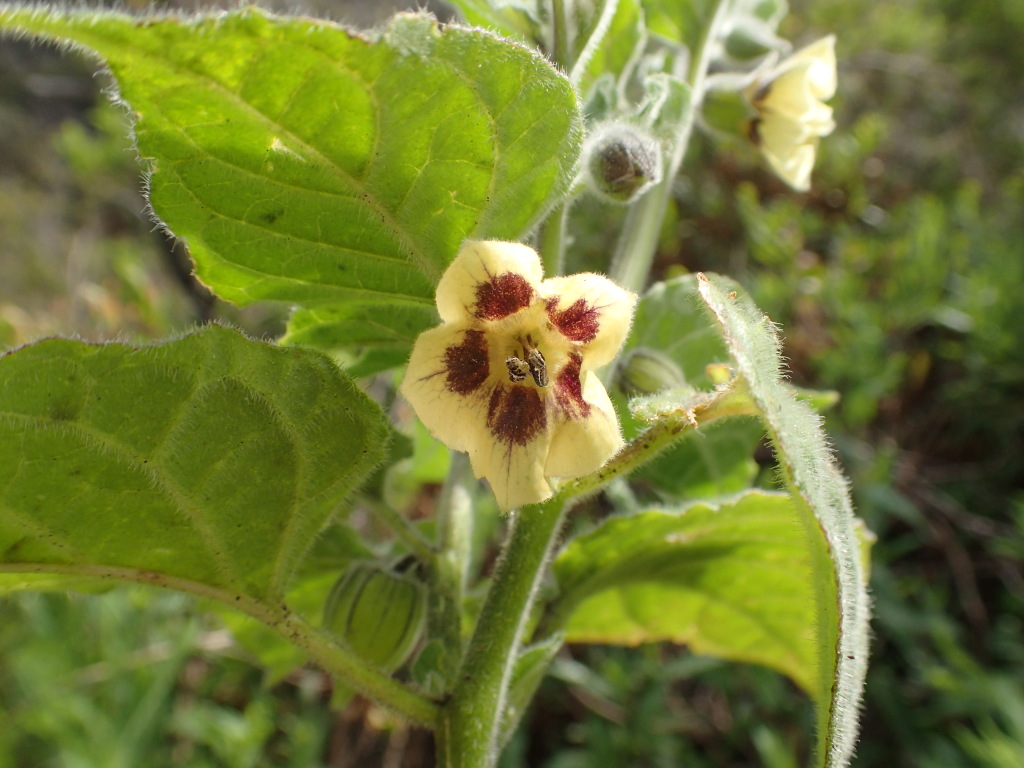Physalis peruviana
L. Cape GooseberryShort-lived shrub to 1 m high, densely pubescent with simple or glandular hairs. Leaves alternate, 2 per node, ovate, mostly to 6 cm long, to 4 cm wide, apex acuminate, base cordate, margins entire or shallowly lobed; petiole to c. 5 cm long. Flowers on pedicels 6–12 mm long; calyx 7–10 mm long, lobes triangular-acuminate, 4–5 mm long; corolla 5-angled, 10–15 mm long, dull yellow, with conspicuous purplish blotches in throat alternating with anthers; anthers 4–5 mm long; style 5–7(–11) mm long, stigma capitate. Fruiting calyx 10-angled, 27–40 mm long, pale yellow-green to gold, drying pale brown; berry globose, 10–20 mm diam.; seeds lenticular, 1.7–2 mm long, yellowish. Flowers mainly spring to summer.
GleP, VVP, GipP, OtP, GGr, EGL, EGU, HSF, HNF, OtR, Strz, VAlp. Also naturalised WA, SA, Qld, NSW, Tas. Native to northern and western South America. Widespread, often as a garden-escape, particularly in coastal and near-coastal areas where found in disturbed sites.
Often cultivated for its edible fruit.
Jeanes, J.A. (1999). Solanaceae. In: Walsh, N.G.; Entwisle, T.J., Flora of Victoria Vol. 4, Cornaceae to Asteraceae, pp. 332–365. Inkata Press, Melbourne.
 Spinning
Spinning




